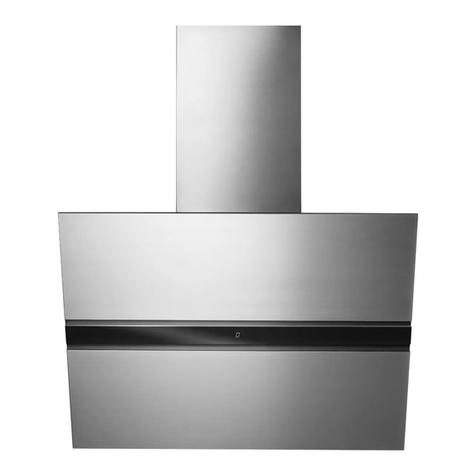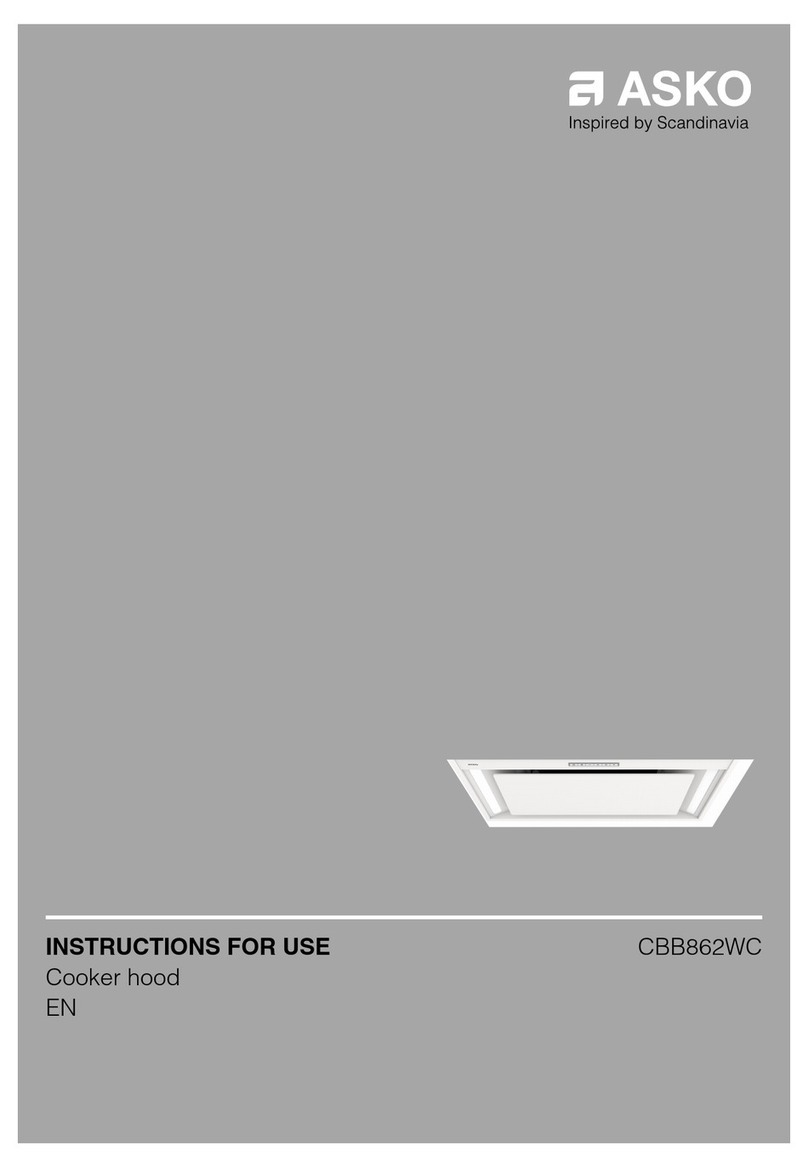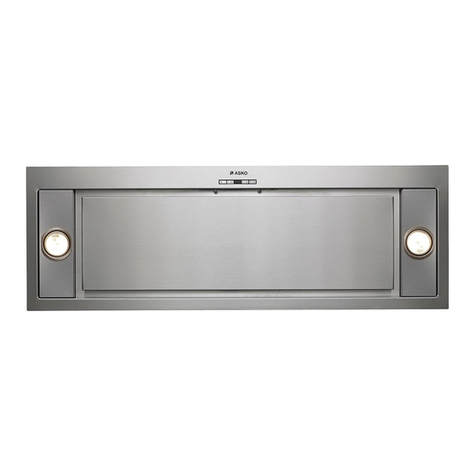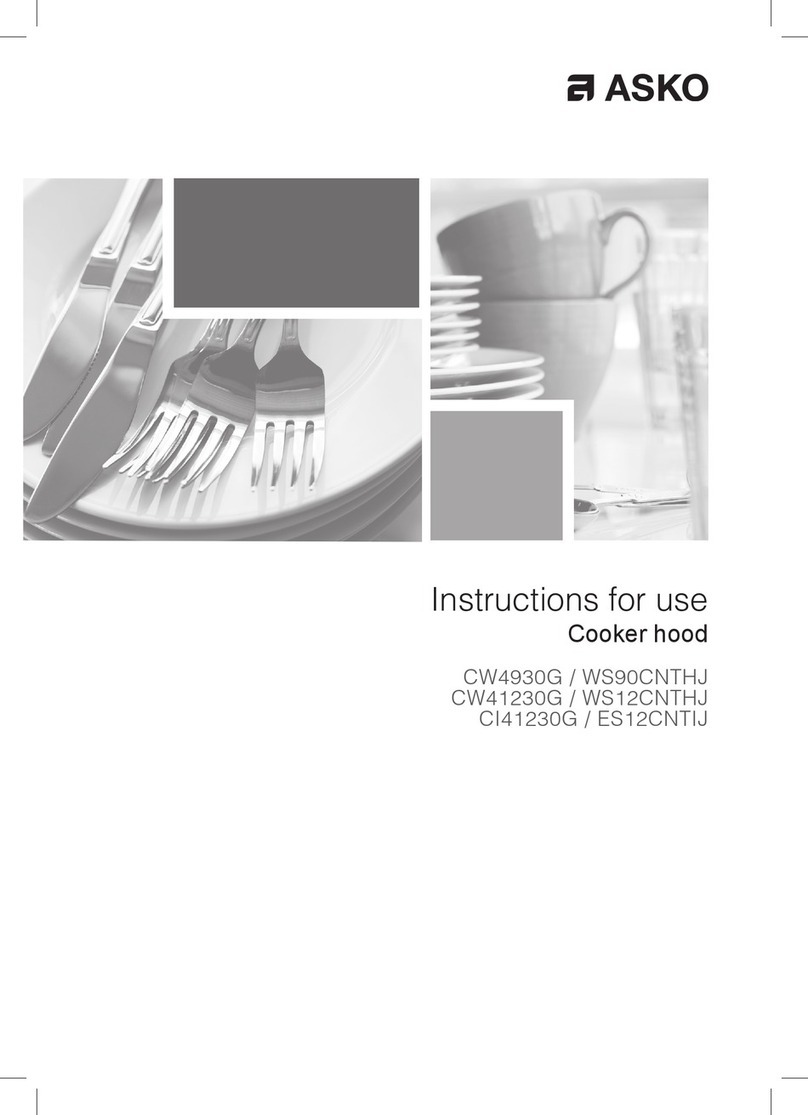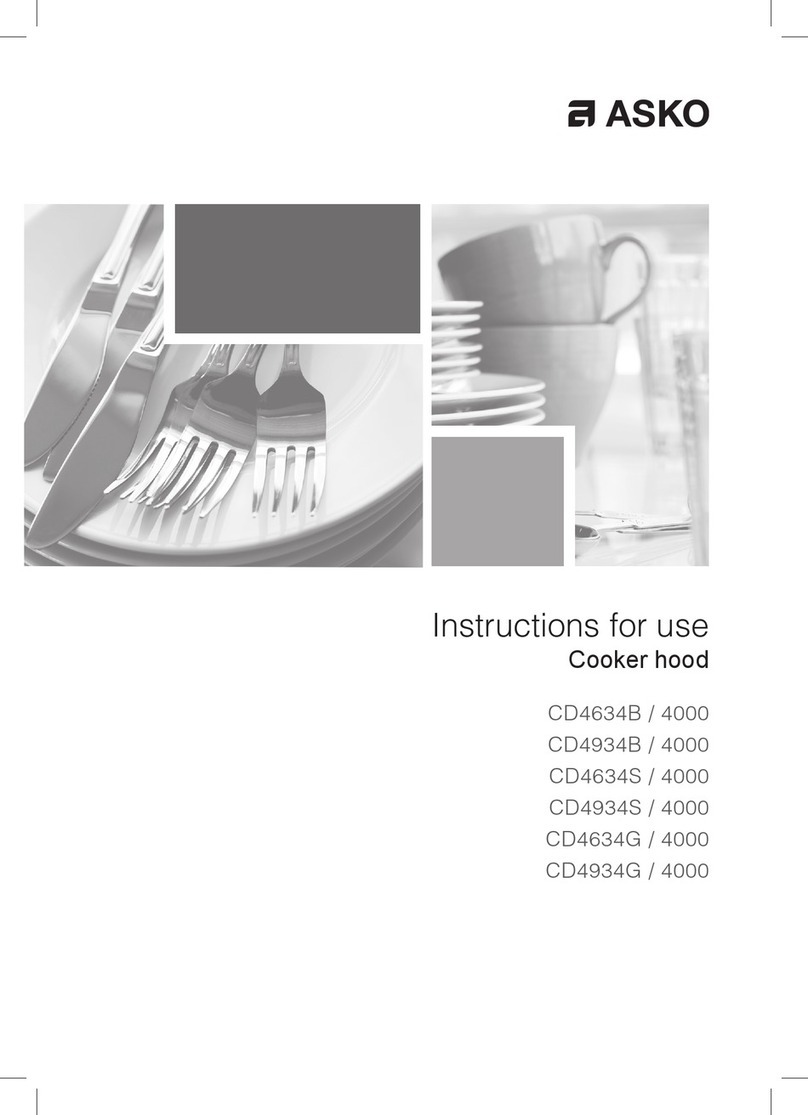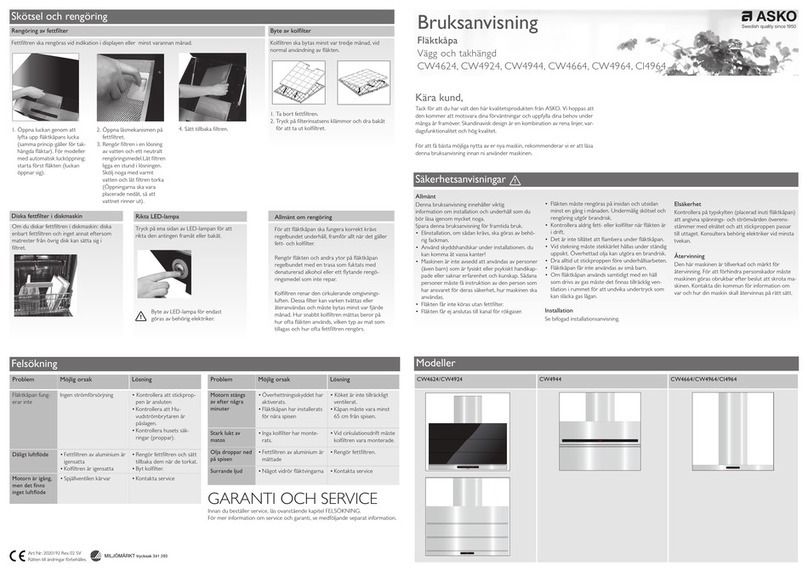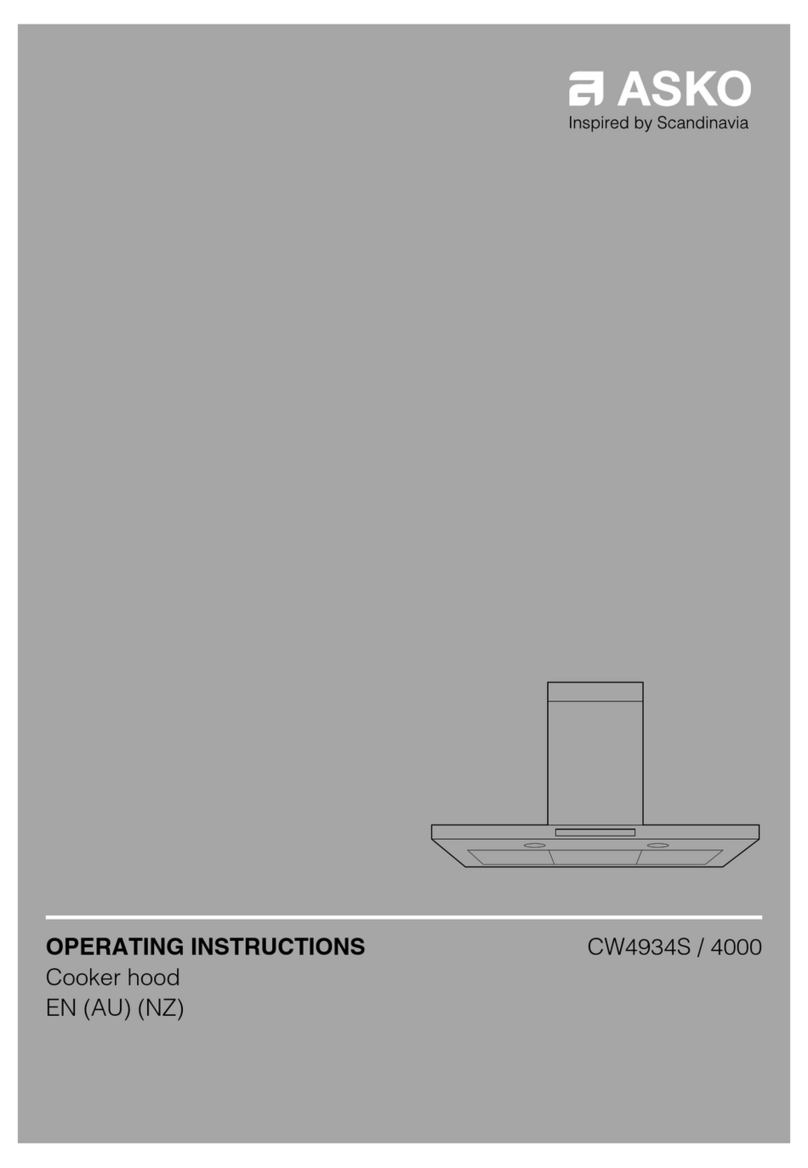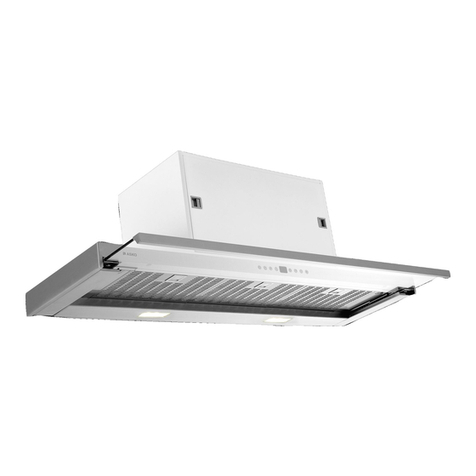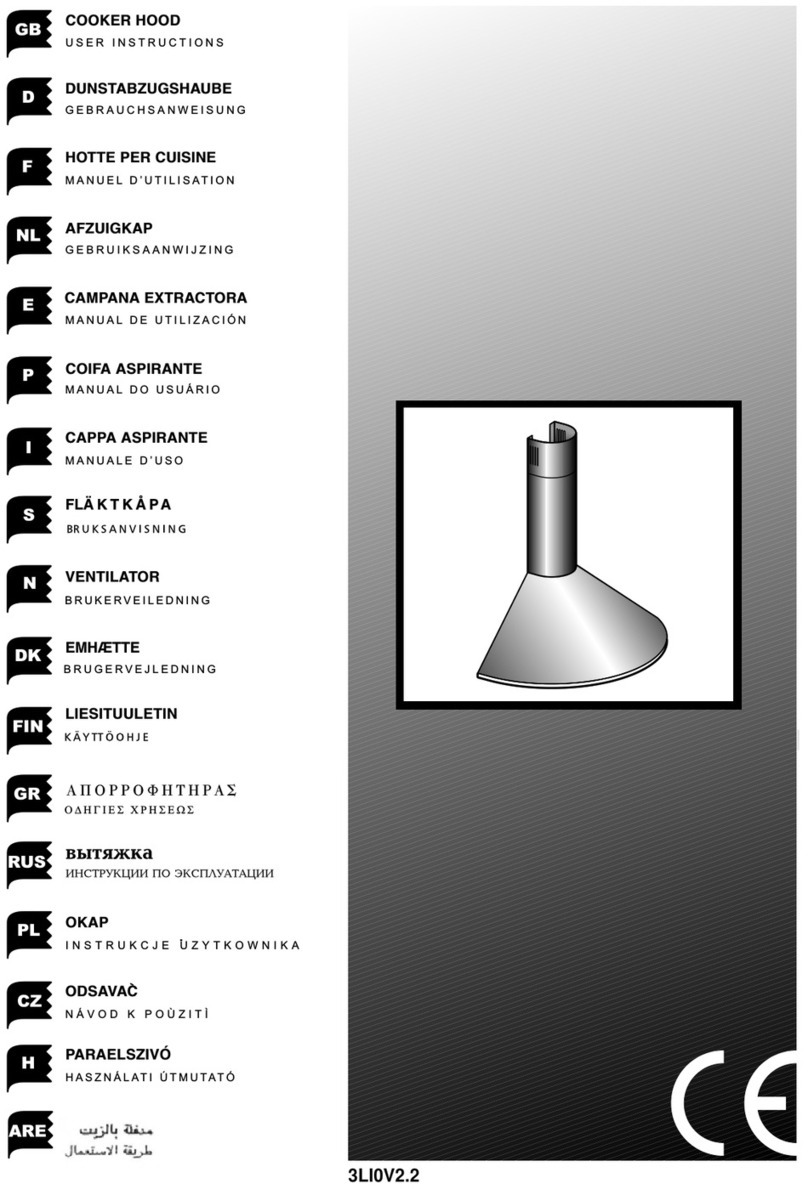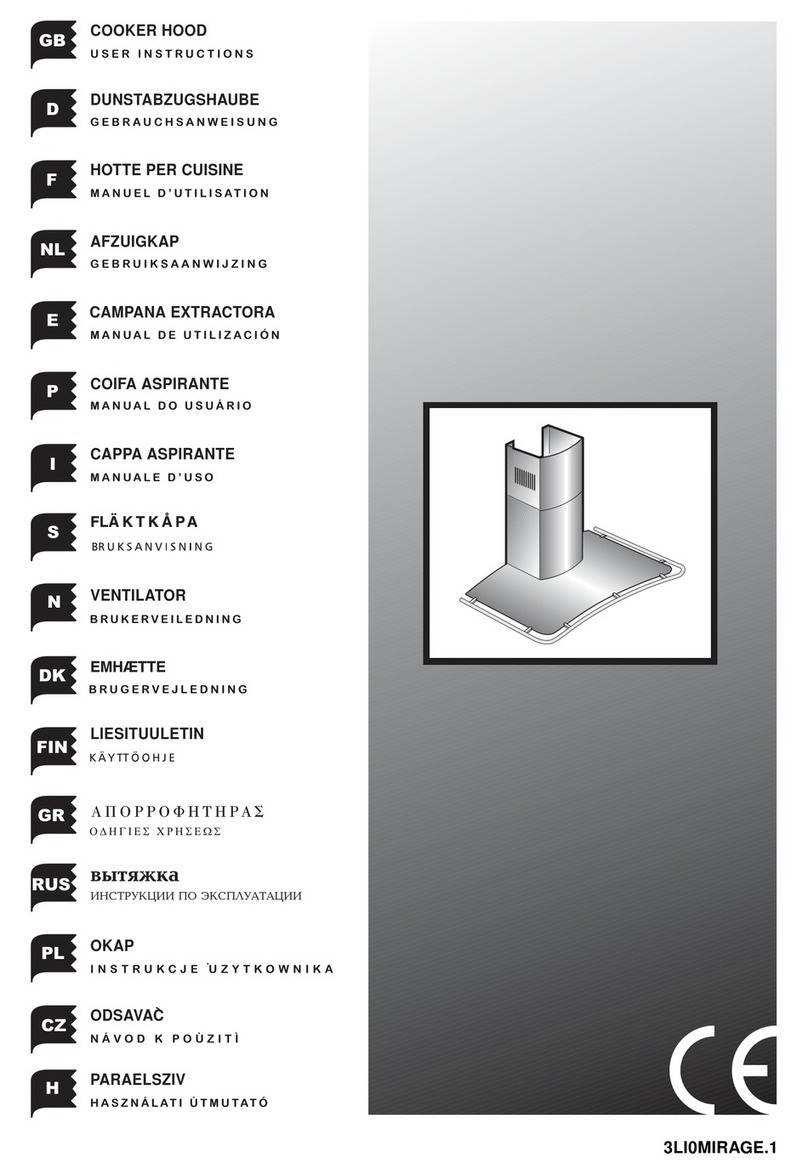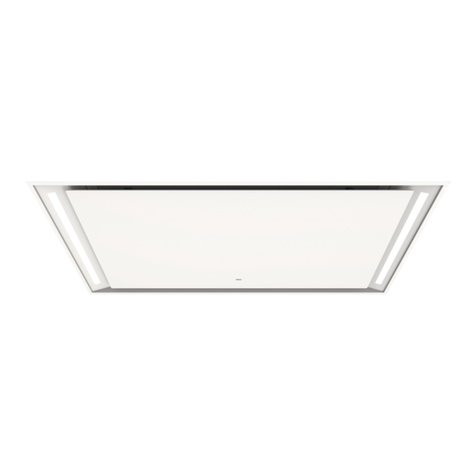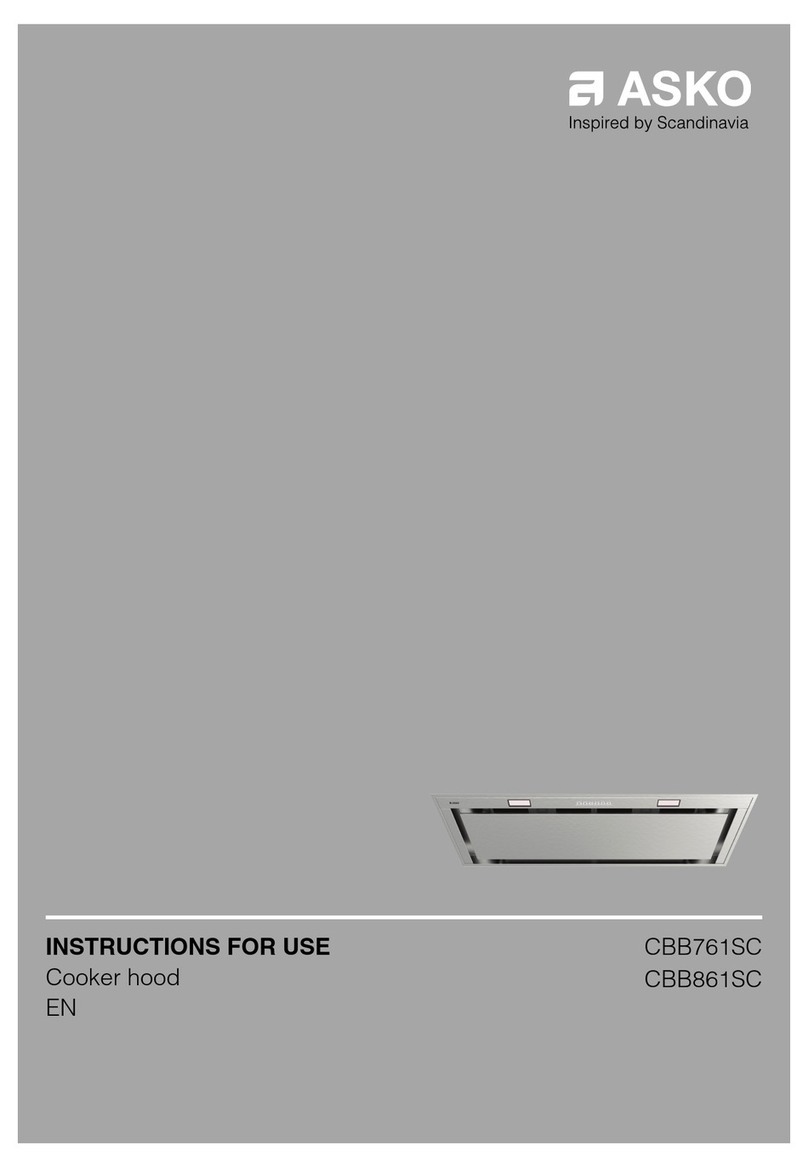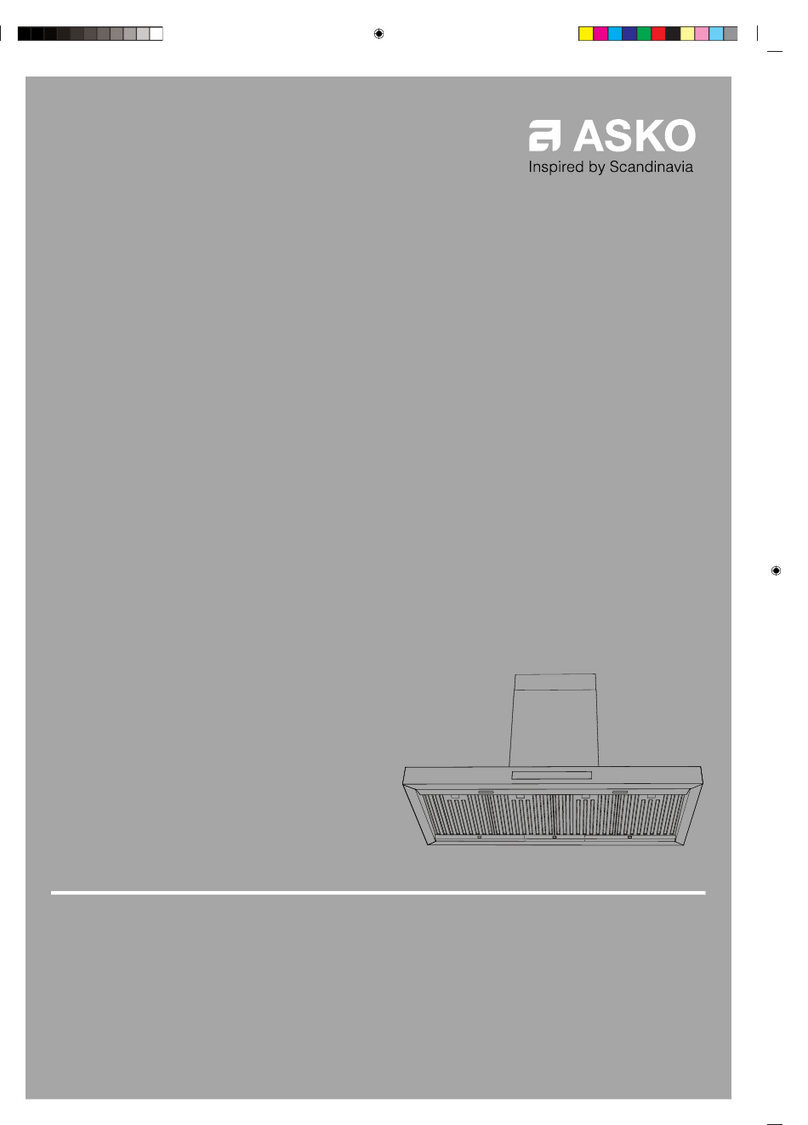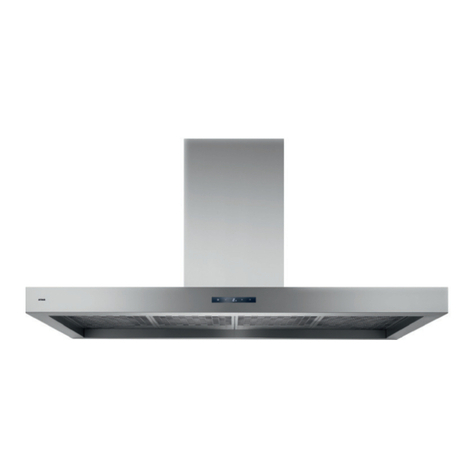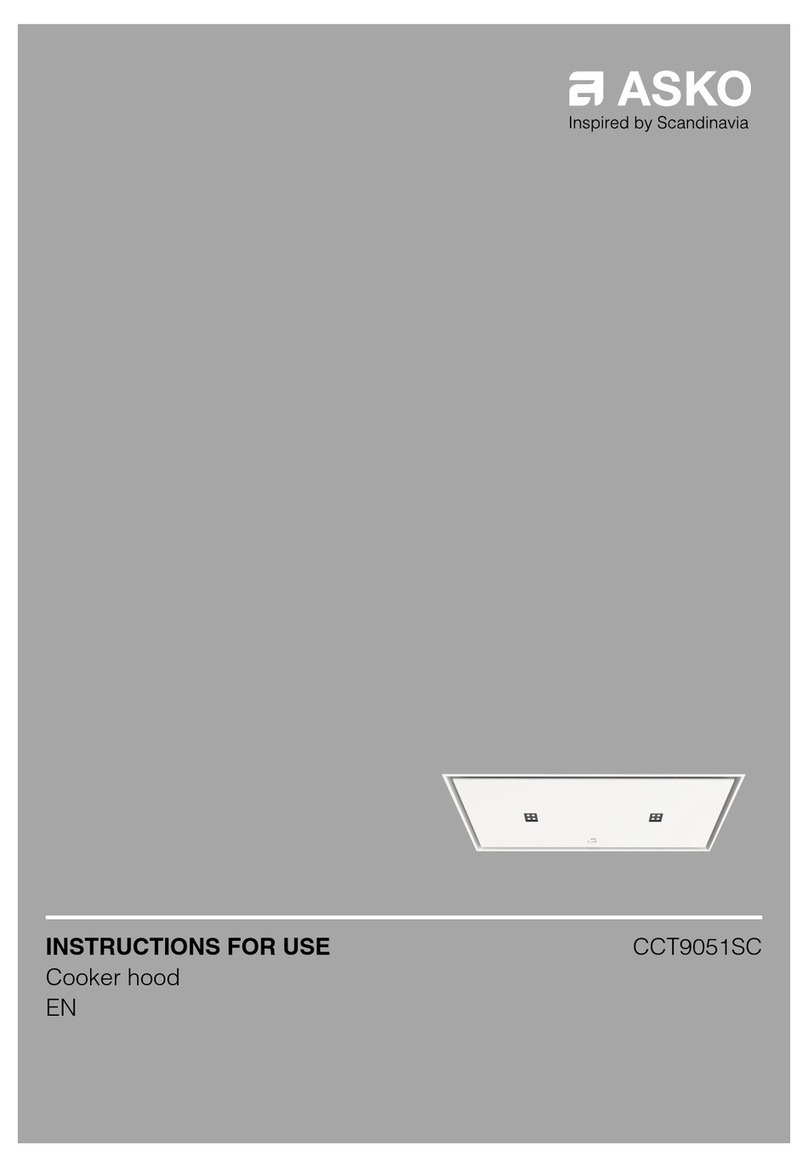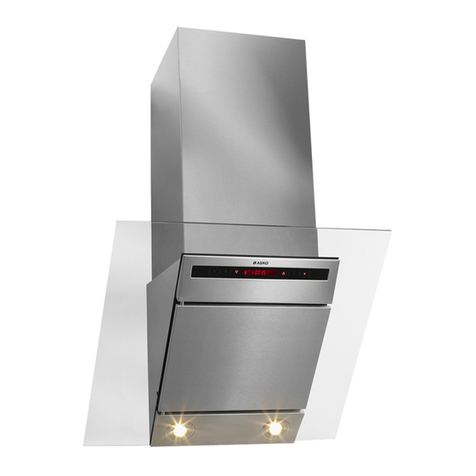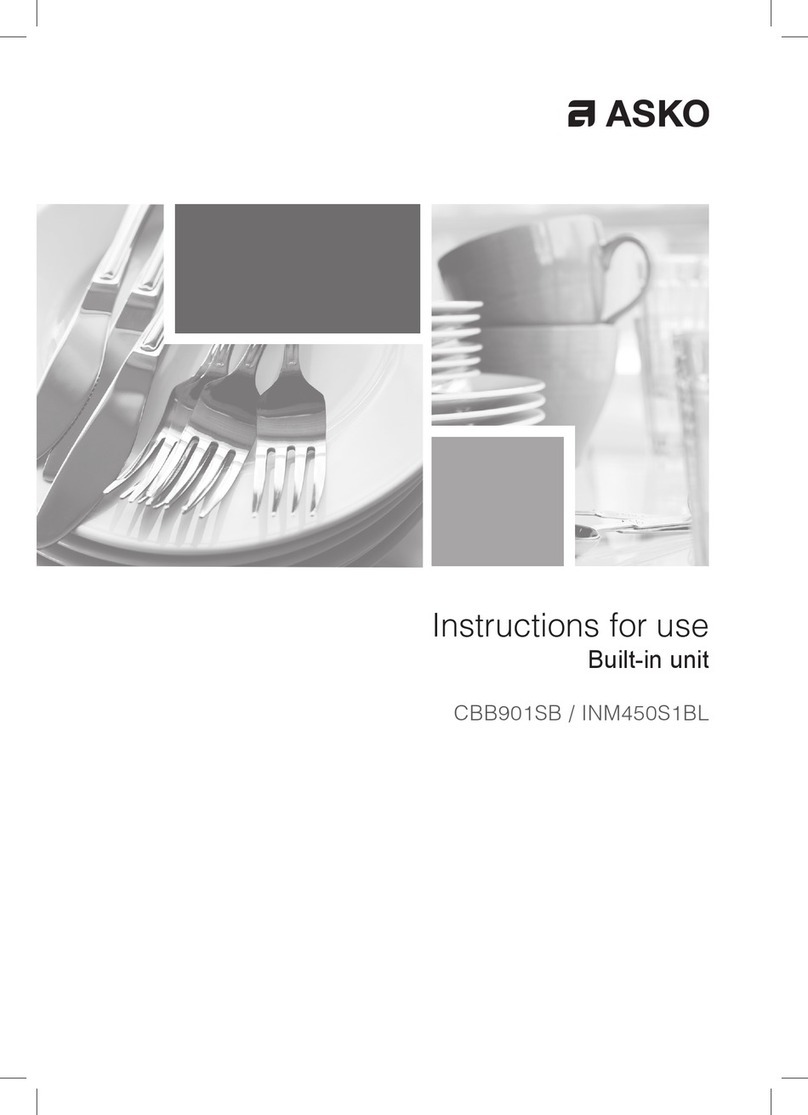
3Use ..............................................................
3Introduction ..................................................
4Description hood .........................................
4Description user interface ............................
5Description remote control ..........................
6Operation ....................................................
6Pairing the remote ........................................
6Switching extraction on and off ...................
7Switch on the boost setting ..........................
7Switching on the timer .................................
8Switching on recirculation mode .................
8Switching off recirculation mode .................
8Clean Air function ........................................
9Switching the light on and off ......................
9Changing the colour lighting temperature ....
10Maintenance ...............................................
10Cleaning .......................................................
12Filter indicator ..............................................
12Lighting ........................................................
13Battery of the remote ...................................
14Technical data ............................................
14EU Product Sheet ........................................
14EU Product Fiche .........................................
15Environmental aspects ..............................
15
Tips for energy-efficient cooking with
hoods ...........................................................
15Disposal of the appliance and packaging ....
Contents
